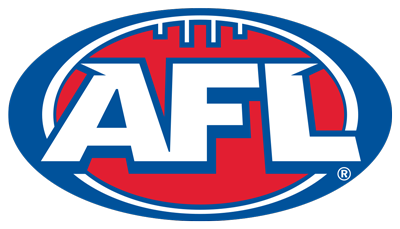Risks and Rewards: Mastering AFL Tackling
Last updated on April 22, 2024 at 13:13 pm
Posted on March 24, 2024 at 08:06 am
Mastering AFL tackling requires precision and technique, adhering to specific player contact rules and defined target areas on the opponent’s body. The risks involve injuries, penalties, and hindered team performance, while rewards include defensive prowess, game-changing momentum, and player recognition. Proper shepherding is essential for strategic positioning and defensive tactics. Tackling not only influences game outcomes and creates scoring opportunities but also demonstrates a team’s resilience and defensive strength. Understanding these aspects is important for players seeking to excel in AFL and make a profound impact on the field.
Tackling Techniques and Fundamentals
Mastering the art of tackling in AFL requires precision, technique, and a deep understanding of the rules governing player contact on the field. Proper tackling involves holding the opponent in possession of the football below the shoulders and above the knees. Tackles can be executed from various angles but must not involve pushing in the back.
Understanding when a free kick or a ball-up is awarded based on the player’s prior opportunity is essential. Additionally, players need to be mindful of avoiding high tackles due to the associated risks of head injuries. By adhering to the AFL’s guidelines on tackling, players not only enhance their gameplay but also contribute to maintaining a safe and fair environment on the field.
Risks Associated With Tackling
Players who fail to recognize the risks associated with tackling in AFL may find themselves facing severe consequences on the field. Tackling, while a fundamental aspect of the game, poses several dangers that players must be aware of:
Injuries: Tackling incorrectly can lead to various injuries such as concussions, shoulder dislocations, or knee damage.
Penalties: Illegal tackles can result in free kicks or even suspensions, impacting not only the player but the entire team.
Reputational Damage: Players known for reckless tackles may develop a negative reputation, affecting their career prospects.
Team Disadvantage: Continual high-risk tackles can leave a team short-handed due to players being sidelined, reducing their chances of success.
Rewards of Mastering Tackling
Achieving proficiency in tackling in AFL not only enhances a player’s defensive skills but also contributes substantially to team success on the field. Mastering the art of tackling can lead to various rewards for players and their teams.
A well-executed tackle can swiftly turn the tide of a game by causing turnovers, creating scoring opportunities, and boosting team morale. Effective tackling can disrupt the opposition’s game plan, instill fear in the minds of opponents, and showcase a player’s physical presence and determination.
Moreover, mastering tackling skills can earn a player recognition for their defensive prowess, potentially leading to individual awards and accolades. Ultimately, mastering tackling in AFL can be a game-changer and a significant factor in achieving victory on the field.
Relevant AFL Skills: AFL Kicking
Importance of Proper Shepherding
The strategic execution of proper shepherding techniques in AFL not only plays a pivotal role in team defense but also profoundly influences the dynamics of player positioning on the field. Shepherding is an essential aspect of the game that requires finesse and awareness to effectively manipulate the flow of play. Understanding the significance of proper shepherding can enhance a team’s defensive strategies and create opportunities for offensive advancements.
To master shepherding in AFL, players should focus on:
Positioning: Maintaining the right distance and angle from the opponent to effectively block their path.
Timing: Knowing when to initiate a shepherd to provide maximum support to teammates.
Physicality: Using controlled physical contact to impede opponents without committing fouls.
Communication: Coordination between players to execute shepherding tactics seamlessly.
Impact of Tackling in AFL Matches
How does the art of tackling in AFL matches influence the strategic outcomes and physical demands of the game?
Tackling in AFL matches is a pivotal aspect that can sway the momentum of a game. Effective tackles not only stop opponents in their tracks but also create opportunities for turnovers and scoring.
Strategically, well-executed tackles can disrupt the flow of the opposition’s gameplay, forcing turnovers and creating scoring chances.
In addition, tackling places significant physical demands on players, requiring strength, agility, and timing to execute properly.
The impact of tackling in AFL matches extends beyond individual plays, influencing team strategies and overall game dynamics. A strong tackling game can be a game-changer, showcasing a team’s defensive prowess and resilience. Related: ALL AFL Skills Guide
Conclusion
To sum up, mastering the art of tackling in AFL requires a deep understanding of techniques, risks, and rewards.
Adhering to regulations and exhibiting sportsmanship are essential in ensuring player safety and game integrity.
By recognizing the strategic significance of tackling, players and fans can appreciate the complexities of this fundamental aspect of the sport.
Tackling not only influences match outcomes but also shapes the overall dynamics of AFL games.
_________












